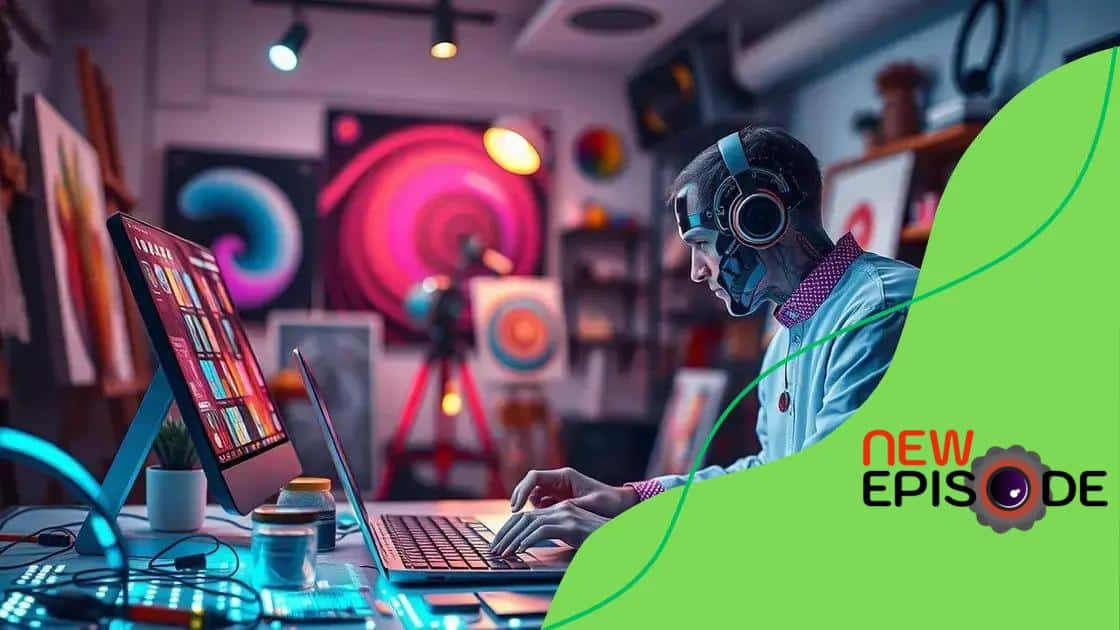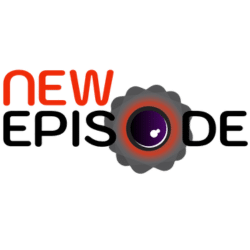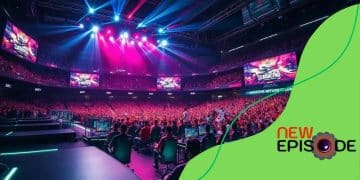The role of AI in transforming the creative industries

The role of AI in transforming the creative industries involves enhancing creativity, streamlining workflows, and raising ethical concerns about originality and ownership in art and design.
The role of AI in transforming the creative industries is becoming more evident each day. Have you noticed how technology influences your favorite artists and creators? Let’s dive into this fascinating shift.
How AI is enhancing creativity in art
AI is transforming the way we create and experience art. By leveraging technology, artists are finding new ways to express themselves. It opens doors to creativity that were not possible before.
The integration of AI in artistic processes
Artists are now using AI tools to enhance their creative processes. These tools can analyze styles, colors, and even themes that resonate with audiences. This collaboration between human creativity and machine learning paves the way for innovative forms of expression.
Examples of AI in art
Many artists are embracing AI to push boundaries. Here are some examples:
- Generative art: AI algorithms can create visually stunning pieces based on learned patterns from existing artworks.
- Style transfer: This technique allows artists to apply the style of one image to another, creating unique results.
- Interactive installations: Some artists use AI to make installations that change based on audience reactions.
- Music and visuals: AI programs can create music that complements visual art, enhancing the overall experience.
The collaboration between human and machine is paving new paths in artistic exploration. Artists can focus more on their ideas while AI takes care of repetitive tasks, such as color theory or composition. This synergy enables creators to experiment fearlessly and express their visions with greater freedom.
Additionally, AI can analyze vast amounts of data to suggest trends that artists might not have considered. This insight can lead to the creation of artwork that is not only unique but also relevant to society today. Moreover, AI can help in understanding audience preferences, allowing artists to cater their work accordingly.
As AI technology continues to advance, it promises to further revolutionize the art world. The potential for collaboration is limitless, and the future of creativity looks brighter than ever. Whether through the creation of immersive experiences or pioneering new forms of artistic expression, AI is undeniably enhancing the landscape of art.
The impact of AI on music production
The impact of AI on music production is profound and far-reaching. AI is changing the way music is created, produced, and experienced, enhancing the entire workflow for artists and producers.
Collaboration with AI in composing music
Many musicians now use AI tools to help compose music. These tools analyze existing songs and create new melodies based on learned patterns. This collaboration between human creativity and AI can lead to exciting and unexpected musical outcomes.
Automation in music production
AI is also automating various aspects of music production. This includes:
- Mixing and mastering: AI algorithms can adjust levels and effects to ensure the best sound quality without extensive manual effort.
- Sound design: Musicians can use AI to generate unique sounds that enhance their tracks.
- Tempo and rhythm adjustments: AI can analyze tracks to create perfect beats or suggest tempo changes based on genre standards.
- Music editing: With AI, editing becomes faster and more efficient, allowing producers to focus on creativity.
As AI continues to evolve, new software is emerging that allows artists to interact with the AI in real-time. This means that during live performances, AI can adapt the music based on audience reactions. This creates an engaging and immersive experience for all.
Additionally, AI can analyze listener preferences, helping artists understand what resonates with their audience. This data-driven approach enables musicians to create music that is more likely to be enjoyed by their fans.
The world of music production is embracing AI, and this trend is likely to continue. The balance between artistic expression and technological advancement allows for groundbreaking possibilities in the music industry. Artists now have tools at their disposal that enhance their ability to create unlike ever before.
AI’s role in revolutionizing design processes

AI’s role in revolutionizing design processes is changing the way designers work and create. By utilizing AI tools, designers can enhance their workflows and unlock new levels of creativity.
Streamlining the design workflow
AI can automate repetitive tasks, allowing designers to focus on more creative aspects. This automation helps in speeding up the design process significantly. Designers can generate variations of their work quickly, refine concepts, and explore ideas more freely.
Enhancing creativity through AI
AI tools can provide inspiration and suggest design elements based on current trends. These suggestions help designers create modern and visually appealing projects. Here are a few ways AI enhances creativity:
- Style recommendations: AI can analyze design styles and suggest options that fit a project’s vision.
- Real-time feedback: Designers can receive immediate feedback on their work, improving the overall quality and collaboration.
- 3D modeling: AI can aid in creating complex 3D models, making it easier for designers to visualize their ideas.
- Personalization: AI can help in creating personalized designs based on user preferences and behavior.
Furthermore, AI can analyze user interactions to understand what designs resonate with audiences. By interpreting data, designers can make informed decisions and create solutions that are not only innovative but also user-friendly.
This integration of AI into design processes is transforming industries. From graphic design to product design, the possibilities are endless. Designers who embrace these technologies can stay competitive and deliver unique solutions in a fast-paced market.
Exploring AI tools for content creation
Exploring AI tools for content creation reveals a wealth of possibilities for writers, marketers, and creators. These tools help streamline the writing process, generate ideas, and enhance creativity.
Types of AI content creation tools
There are various types of AI tools available that cater to different aspects of content creation. Some examples include:
- Writing assistants: These tools provide grammar checks, style suggestions, and even generate text based on prompts.
- Content generation platforms: These AI systems can produce full articles or blog posts, allowing users to customize topics and tones.
- Image and video creation tools: AI can create visuals or videos by interpreting text, making it easier to produce multimedia content.
- Social media management tools: AI helps analyze trends and engagement patterns, suggesting optimal times for posting content.
Moreover, AI can assist in brainstorming sessions. By analyzing existing content in a particular niche, these tools can suggest new ideas and angles for articles. This makes it easier for content creators to stay relevant and keep their audiences engaged.
Benefits of using AI in content creation
The benefits of incorporating AI into the content creation process are substantial. For starters, it can significantly reduce the time spent on drafting and editing. This increased efficiency allows creators to focus on strategy and creativity. AI tools can also help ensure consistency in tone and style across multiple pieces of content.
Additionally, utilizing AI can enhance personalization. By analyzing audience data, AI can suggest content topics that cater to specific preferences, leading to higher engagement rates. As AI continues to evolve, its role in content creation will only grow, opening doors to innovative ways to connect with audiences.
Challenges and ethics in AI-generated art
Challenges and ethics in AI-generated art are important topics that creators and audiences must consider. As AI technologies evolve, they bring forth various concerns regarding originality and ownership.
Concerns about originality
One major challenge is the question of originality. When AI creates art based on existing styles and works, it raises doubts about whether the output is truly original. While AI can produce unique compositions, the influences of prior art cannot be ignored. This leads to debates about how much human involvement is necessary for a piece to be considered authentic.
Intellectual property issues
Another significant challenge involves intellectual property rights. Who owns the rights to an artwork created by AI? Is it the programmer, the user, or the AI itself? These questions complicate copyright laws, as conventional definitions of authorship may not apply. Legal frameworks must adapt to address these new realities.
Ethical implications
Ethical concerns also play a crucial role in discussions about AI-generated art. For instance, there is the potential for misrepresentation. AI can create pieces that might mislead audiences about their origins. If viewers believe a work was made by a famous artist but it was actually generated by a machine, this could distort their appreciation and understanding of art.
Moreover, the use of AI in art raises questions about diversity and representation. If AI systems are trained on biased data, the artworks they produce may reflect those biases. This can lead to a lack of representation for various cultures and perspectives. Addressing these challenges requires intentional programming and diverse datasets.
As the fields of art and technology continue to intersect, addressing these challenges and ethical dilemmas will be crucial. Creators and audiences must engage in open discussions about the impacts of AI on the artistic landscape to foster a healthy understanding of this evolving medium.
AI is reshaping the creative industries, offering new possibilities for artists and designers alike. As we navigate the intersection of art and technology, it’s essential to consider the challenges and ethics involved. Discussions about originality, ownership, and representation will guide us as these technologies continue to evolve. Embracing the potential of AI can spark creativity and innovation while pushing the boundaries of how we understand and appreciate art. The future of creativity lies in finding a balance between human expression and technological assistance, paving the way for a more inclusive and dynamic artistic landscape.
FAQ – Frequently Asked Questions about AI in Creative Industries
How is AI changing the way art is created?
AI is enabling artists to explore new styles and techniques, providing tools that enhance creativity and streamline the artistic process.
What ethical concerns are associated with AI-generated art?
Ethical concerns include questions about originality, ownership rights, and the potential for biased representation in AI-created artworks.
Can AI help in speeding up the design process?
Yes, AI can automate repetitive tasks, allowing designers to focus on creativity and innovation, significantly speeding up the design workflow.
What are the benefits of using AI tools in content creation?
AI tools assist in generating ideas, improving writing quality, and personalizing content based on audience preferences, enhancing overall engagement.






